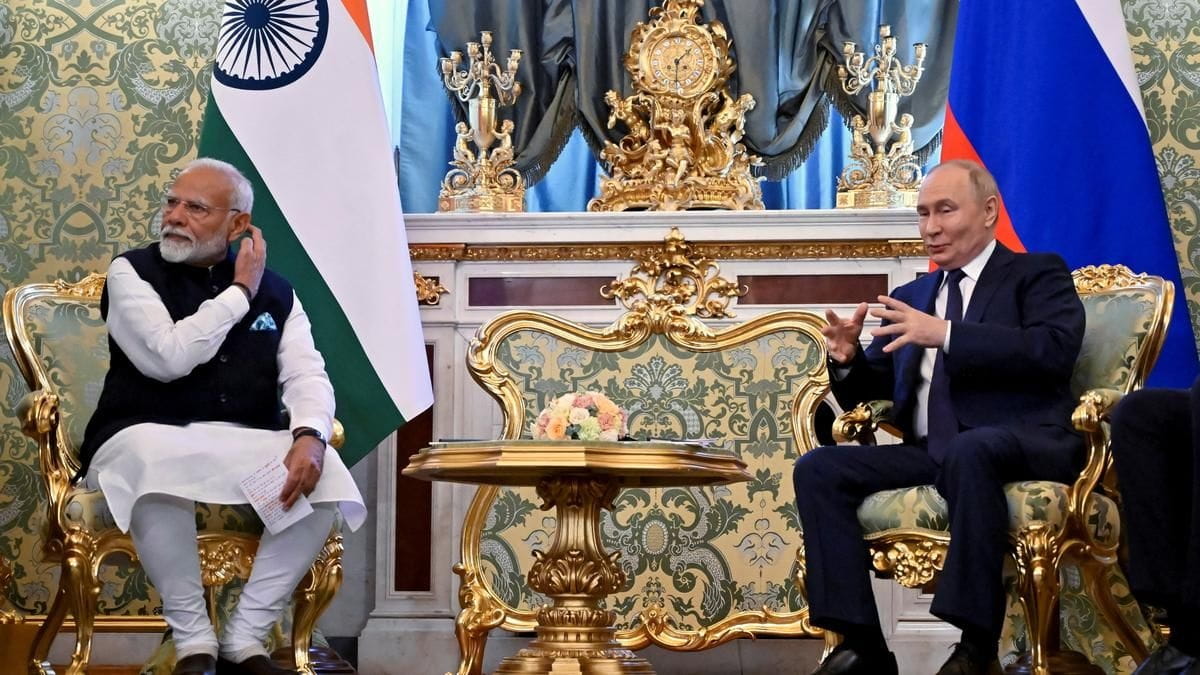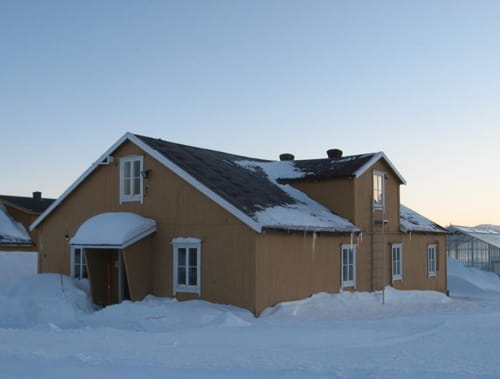
Russian President Vladimir Putin and Indian Prime Minister Narendra Modi meet at the Kremlin in Moscow, Russia on July 9, 2024. | Reuters.

It is worth noting that earlier, Russia and China agreed to establish a joint commission to advance the NSR development and transit. Despite the persistent difference in Russia and China’s approaches to the Northern Sea Route (China considers the NSR to be an extension of the Polar Silk Road, while Russia regards it as its internal waters), the situation is that Russian authorities recognize the importance of both India and China in the development of the Arctic region to diversify energy supplies, cargo deliveries, and attract investments.
Introduction
Indo-Russian relations began to develop actively in the mid-1950s and in the contemporary context, have solidified Russia as India’s fourth largest trading partner, behind the United States, China and the UAE. The Arctic region, with its vast resources and strategic importance, holds significant potential for Indo-Russian relations. Given its area of 4.75 million km², which constitutes 27.76% of Russia's total land area, and a population of 2.37 million (representing 1.62% of Russia's population as of January 1, 2024), there are numerous opportunities for collaboration.
The recent negotiations during India's Prime Minister Narendra Modi’s two-day visit to Russia have further emphasized the importance of the Arctic region within the Greater Eurasian Space.Indeed, the initiatives in the Arctic are diverse and aim to integrate the region into a broader economic, investment, transport, digital, energy and infrastructural network alongside countries from Central, North-East, and South-East Asia which show a keen interest in the Arctic affairs.
These are the realities from which the political leadership of Russia and India are proceeding today, declaring the formation of a new architecture of transport corridors with the inclusion of Arctic routes and paying close attention to the development of supply chains, financial sustainability and trust in the business environment.
Role of the Arctic in India-Russia Ties
While a formal agreement between Russia and India in logistics might not have been finalized, the mutual intent to intensify cooperation signifies a commitment to improving trade and transport links. So far, Russia and India have expressed their intentions to facilitate creation and use of transport corridors, which involve the International North–South Transport Corridor (INSTC),the Chennai-Vladivostok Eastern Maritime Corridor, and the Northern Sea Route (NSR). According to the bilateral statement, INSTC is given priority in order to reduce the time and cost of cargo delivery, as well as promoting connectivity in Eurasia.
As for the NSR infrastructure and utilization, the potential for establishing a systematic supply of hydrocarbons to India through this route seems an ambitious goal, despite being a significant aspect of Russia's Arctic strategy.
At present, India and Russia expressed their willingness to create a joint working body under the Intergovernmental Russian-Indian Commission on Trade, Economic, Scientific, Technical and Cultural Cooperation for better coordination and future work along the NSR.It is worth noting that earlier, Russia and China agreed to establish a joint commission to advance the NSR development and transit. Despite the persistent difference in Russia and China’s approaches to the NSR (China considers the NSR to be an extension of the Polar Silk Road, while Russia regards it as its internal waters), the situation is that Russian authorities recognize the importance of both India and China in the development of the Arctic region to diversify energy supplies, cargo deliveries, and attract investments.

India’s first research station in the Arctic, Himadri.| NCPOR.
Also, reflecting on Russia's strategic vision for enhancing economic cooperation and transport connectivity in Eurasia, the Concept of the Foreign Policy of the Russian Federation puts the emphasis on cooperation with India and China along the transport corridors, including the NSR.
In this context, the Arctic region seems to potentially serve as a testing ground for initiatives within the Russia-India-China (RIC-triangle) at a high expert level, particularly as economic cooperation between these countries continues to expand. However, careful management of political and reputational risks is essential to help avoid conflicts in this diverse unity.
In terms of navigation, the NSR is a complex sea artery, distinguished by its great length (from Karsky Gate to Providenya Bay - 5,600 km, overcome by ice-class vessels in 7-15 days), extensive shallow water areas, remote from coastlines over significant distances, sparsely populated coastal areas and severe ice conditions. So far, tankers, gas carriers and container ships are facing problems without icebreaker escort even during the summer navigation period.
For instance, in the last navigation season, the incident with the two oil tankers for Chinese buyers waiting for an icebreaker escort in the East Siberian Sea illustrates the need for icebreaker support to ensure safe and efficient transit.
At the same time, about 40% of India's total oil demand is covered by supplies from Russia. Compared to the situation in 2021, supplies have increased 20-fold and are unlikely to stop there.
In addition, India-Russia welcomed the signing of the Programme of Russian-Indian Cooperation in Trade, Economy and Investments in the Far East of the Russian Federation for 2024-2029, and the principles of cooperation in the Arctic, which have not yet been disclosed. The Programme is envisioned as a framework for further cooperation between India and the regions of the Russian Far East in the fields of agriculture, energy, mineral deposits development, diamonds, pharmaceuticals, maritime transport, etc.
Indeed, the history of the preparation of this document dates back to the VI Eastern Economic Forum in 2021. Then, the Programme was developed by the Ministry of the Far East and Arctic and the National Institution for Transforming India (NITI) in collaboration with the Far East and Arctic Development Corporation. It was reported hat the Innovative Science and Technology Centre located on Russky Island, Vladivostok, could become a platform for the development of scientific and technological partnership between two countries.
In practice, the Arctic and Antarctic Research Institute (AARI) in Russia has been assigned the role of coordinator of research and development with India. This is evidenced by the Memorandum between the AARI and the National Centre for Polar and Ocean Research (NCPOR) in India. In addition to the NCPOR, there are other esteemed scientific centres in India that have expressed their willingness to cooperate with Russian experts on Arctic affairs. This collaboration aims to enhance scientific research and development in the Arctic region, leveraging the expertise and resources of both countries to address common challenges and opportunities in the Arctic.
Conclusion
To sum up, the Arctic region is "opening up" to India, potentially becoming more recognizable to Indian investors and contributing to strengthening bilateral ties. Once Russia adapts to selling oil and oil products for rupees, the next step will involve further expanding and diversifying economic cooperation.What Russia is lacking now is marketing of the Arctic goods and services for Indian consumers. In addition, the Arctic region holds immense potential for enriching the RIC-triangle with new content and collaborative opportunities beyond traditional foreign ministerial meetings.
(Exclusive to NatStrat)